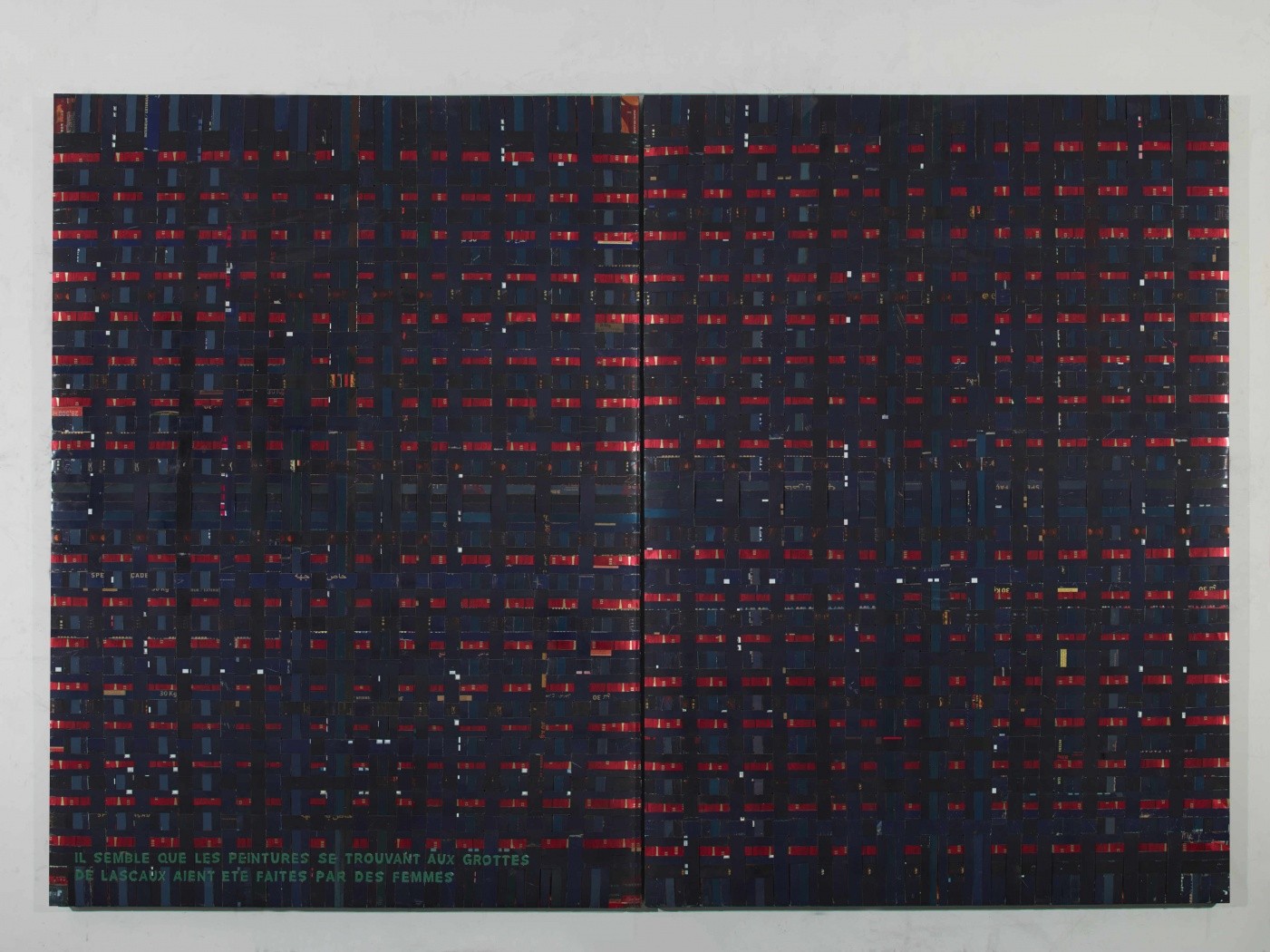 Adel Abdessemed / Cocorico painting, Il semble que les peintures se trouvant aux grottes de Lascaux ont été peintes par / Recycled printed metal / 180 × 260 × 4.5 cm / 2017–2020 / Courtesy of the artist
Adel Abdessemed / Cocorico painting, Il semble que les peintures se trouvant aux grottes de Lascaux ont été peintes par / Recycled printed metal / 180 × 260 × 4.5 cm / 2017–2020 / Courtesy of the artist
Adel Abdessemed probes the wounds of our present. His art, which spans the media of drawing, video, sculpture, poetry, sound, and installation, unfolds as a powerful experience of opposing materials, emotions, and concepts. Titled An Imperial Message after Franz Kafka’s short parable, the exhibition features around 40 pieces of work by the artist, among which more than 10 are newly created. Collectively, the works on view carve out an introspective journey, inviting audience to reflect upon the violence pervading the contemporary world we inhabit and confront our own profound feelings, fears, and desires.
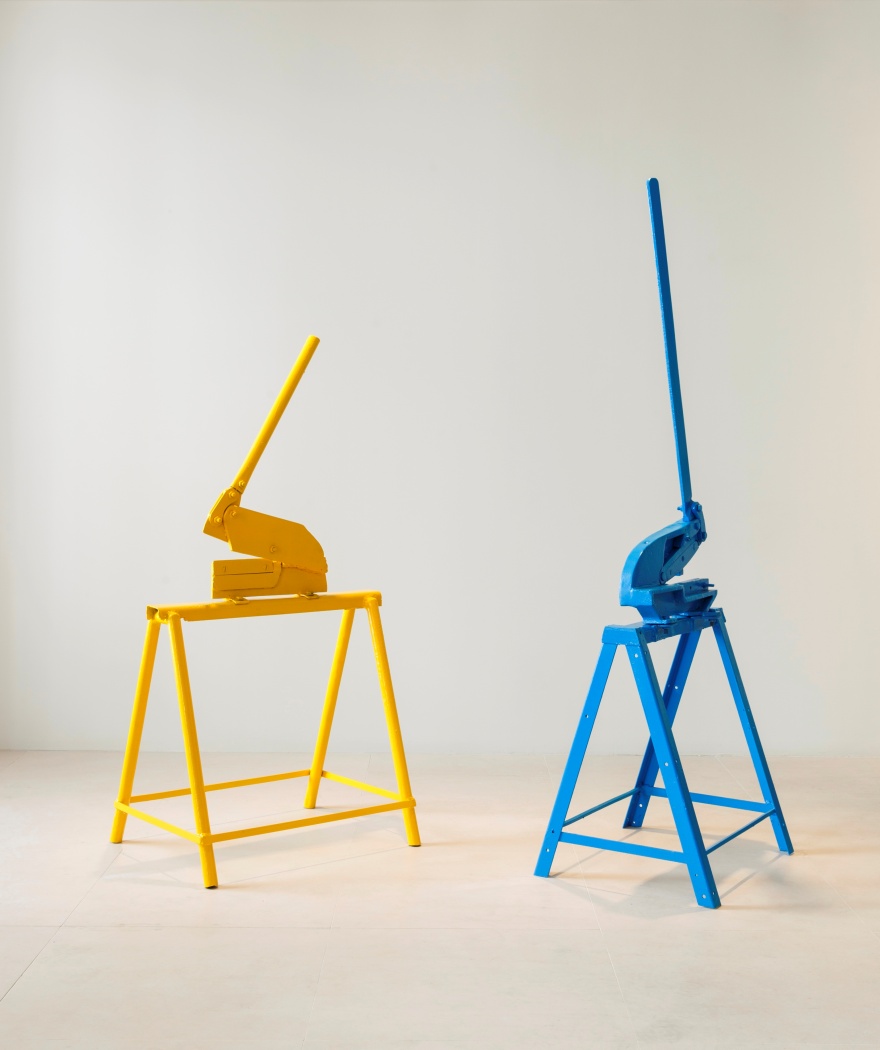
Adel Abdessemed / Eran las cinco en todos los relojes / Steel with paint / 140 × 65 × 35 cm, 180 × 57 × 48 cm / 2018 / Courtesy of the artist
Born in 1971 in Algeria, Abdessemed now lives and works in Paris, France. The artist produces works deeply embedded in power issues. Both his character and his work reveal that he is a fierce guardian of the essential pillars of humanity, of love, of compassion, and of hope. Through evocative yet subtle experience, Abdessemed’s works suppress our systemic desensitization to violent acts. In so doing, the artist shows his unique ability to convene the seemingly discordant elements of tenderness and shock.
As Larys Frogier, Director of Rockbund Art Museum, puts: “Adel Abdessemed has a unique position in contemporary art, and the way he touches those who engage his works has virtually no equivalent. That effect lies in his unique use of raw, simple materials and words, as well as straightforward but very subtle fabrication of the image, but also in the way his works revisit some of the historical and theoretical assumptions in the contemporary arts.”
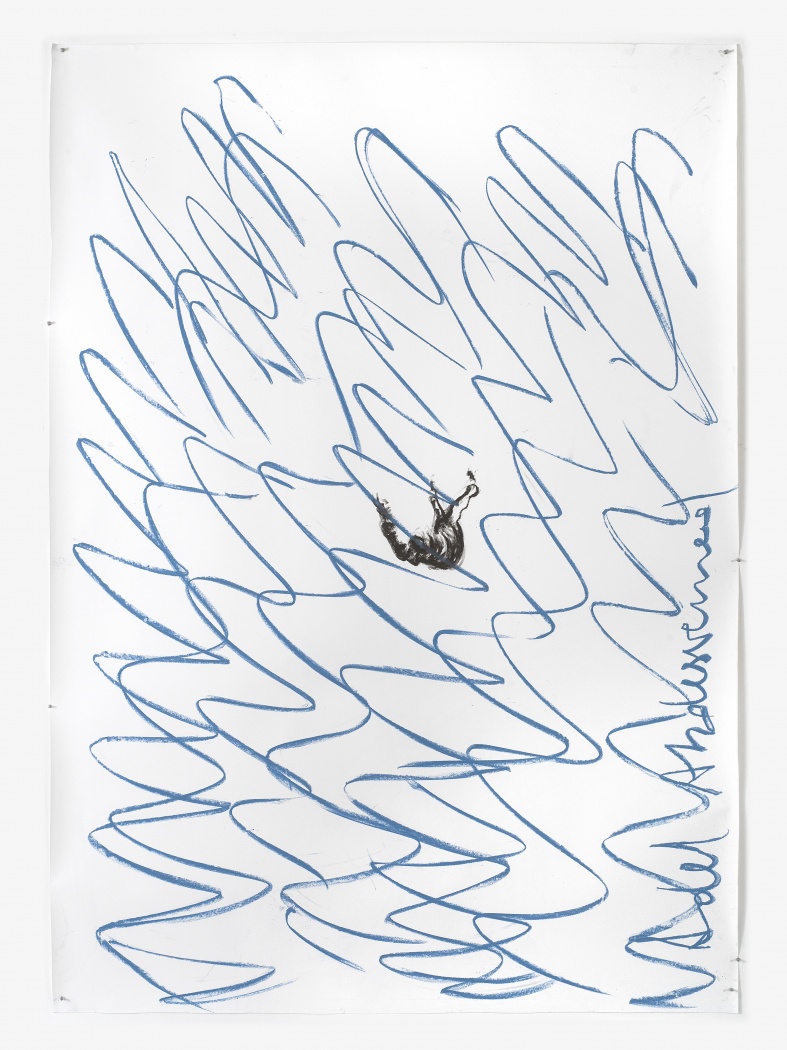
Adel Abdessemed / Air / Charcoal and pastel on paper / 230 × 162 cm / 2021 / Courtesy of the artist
Together with a series of public programs, an exhibition catalogue will extend to topics ranging from public domain, artistic strategy and background through multiple mediums such as poetry, music and novel. An Exhibition Reference Space will be available to visitors at the east gallery on the fourth floor where they may encounter videos, books, interviews and reviews in order to gain more insight into Adel Abdessemed’s practice. Moreover, visitors are encouraged to rearrange the artworks in the guidebook, creating a unique journey of exploration.
Adel Abdessemed’s art stems from, but it is not just plain narratives of trauma. Underlying the depiction of trauma lies the power of life. The exhibition starts from a newly-produced series of large charcoal drawings. Entitled Air, the series features human body figures in various postures floating in the void of paper, capturing the various moments of falling.
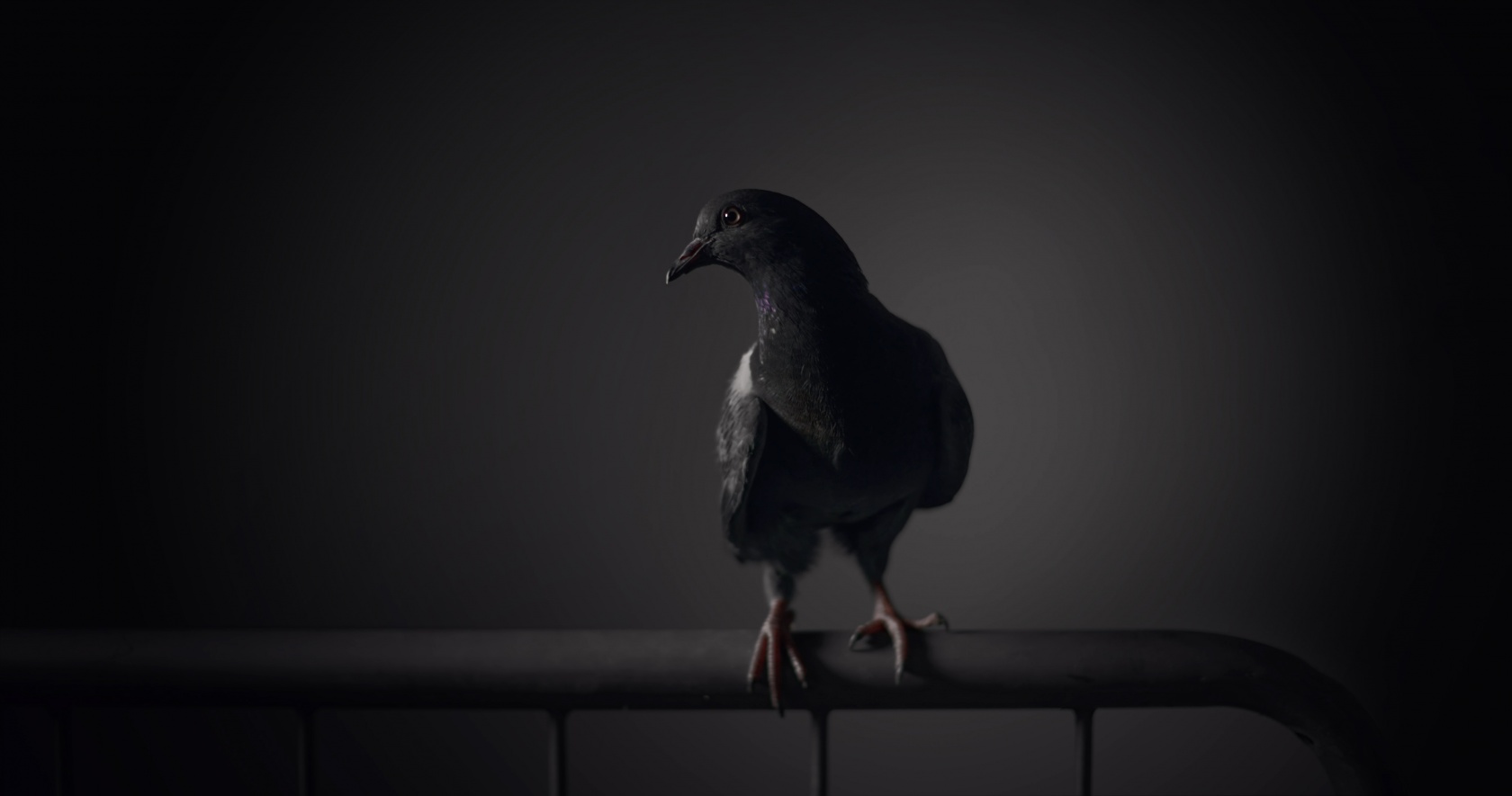 Adel Abdessemed / Die Taubenpost / Single-channel 4K video, color, sound / 3’28”, loop / 2021 / Courtesy of the artist
Adel Abdessemed / Die Taubenpost / Single-channel 4K video, color, sound / 3’28”, loop / 2021 / Courtesy of the artist
Taking the steps down, the music follows. The piece pervading the fourth and fifth floors is titled Die Taubenpost (The Homing Pigeon). It was composed by Franz Schubert at the end of his life and published posthumously. Referring to this piece, Abdessemed’s video shows a pigeon standing quietly on a metallic barrier in front of a dark background. A nine-meter-long painting entitled Alger Alger is opposite of the video. Black lines and patterns are hidden in between the extensive range of reds. They are the musical staves. In fact, Alger Alger is an homage to the vibrant popular song of the same name by Lili Boniche. The lyrics tell the story of an exiled person missing and remembering the city and his family. It also mirrors the artist’s departure from and deep attachment to his hometown of Algiers, where influential poets, musicians, and resistants were (and still are) very active and vigorous.
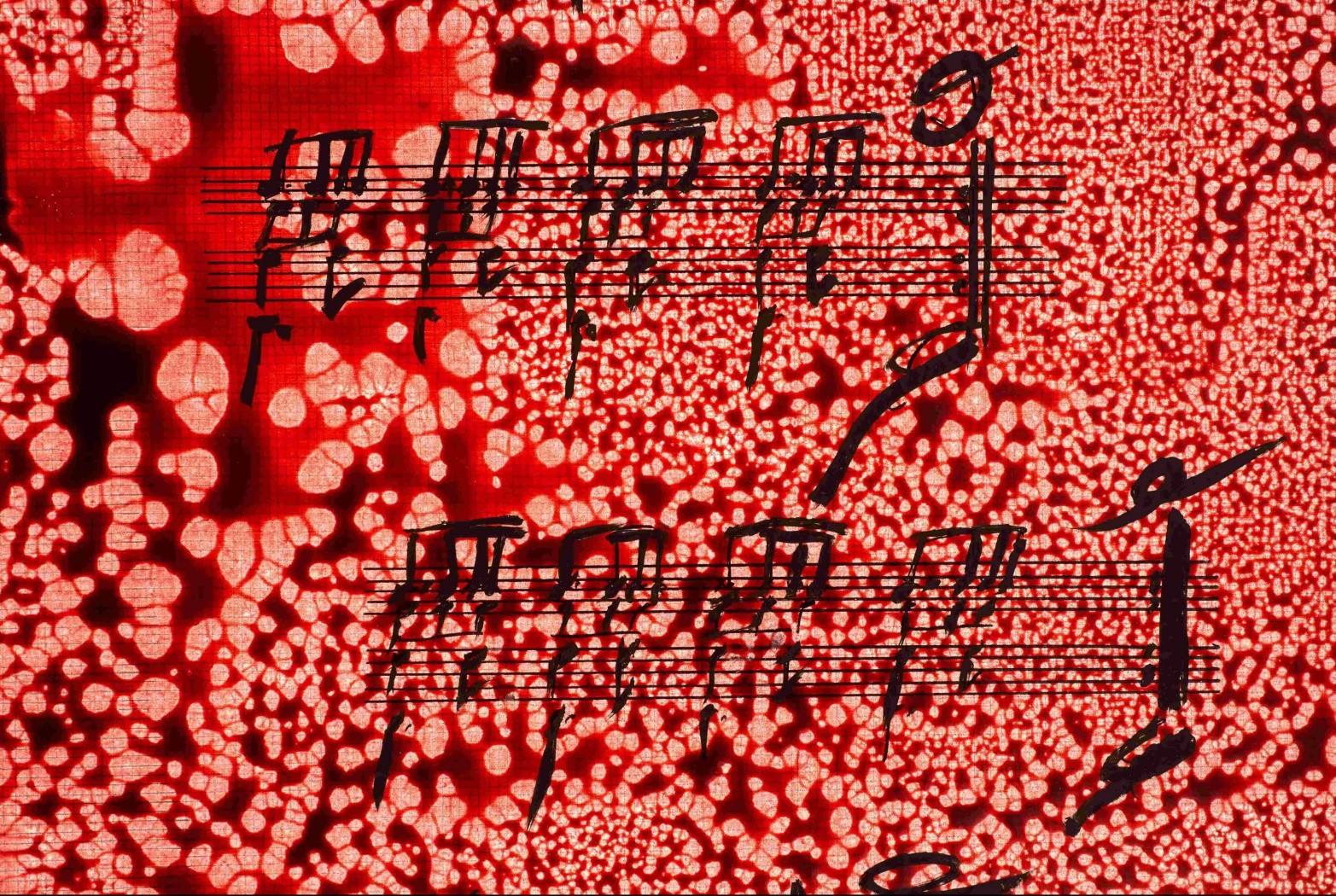 Adel Abdessemed / Alger Alger / Mixed media on canvas / 270 × 900 × 3.5 cm / 2021 / Courtesy of the artist
Adel Abdessemed / Alger Alger / Mixed media on canvas / 270 × 900 × 3.5 cm / 2021 / Courtesy of the artist
A video work, Un Chat noir passe entre nous (A Cat Passing in between Us), welcomes visitors to the third floor. The “eyes / I” of the black cat, who is able to see perfectly in the dark space, is gazing at the “eyes / I” of the visitors, immersing the visitors in darkness. Echoing the homing pigeon and the wandering black cat, a video on the second floor, Politics of the Studio, Nelson, shows a massive white bull standing in the artist’s studio. The bull’s eyes are alert as it tries to find a position in an unfamiliar space. The same floor also presents the artist’s representative large-scale works, including sculptural work Eran las cinco en todos los relojes (It Was Five on All Clocks) and “Cocorico,” an ongoing painting series began in 2016. The artist flattens and reassembles metal cans discarded in the ocean, landfills, and streets to form specific colors and patterns.
About the exhibition
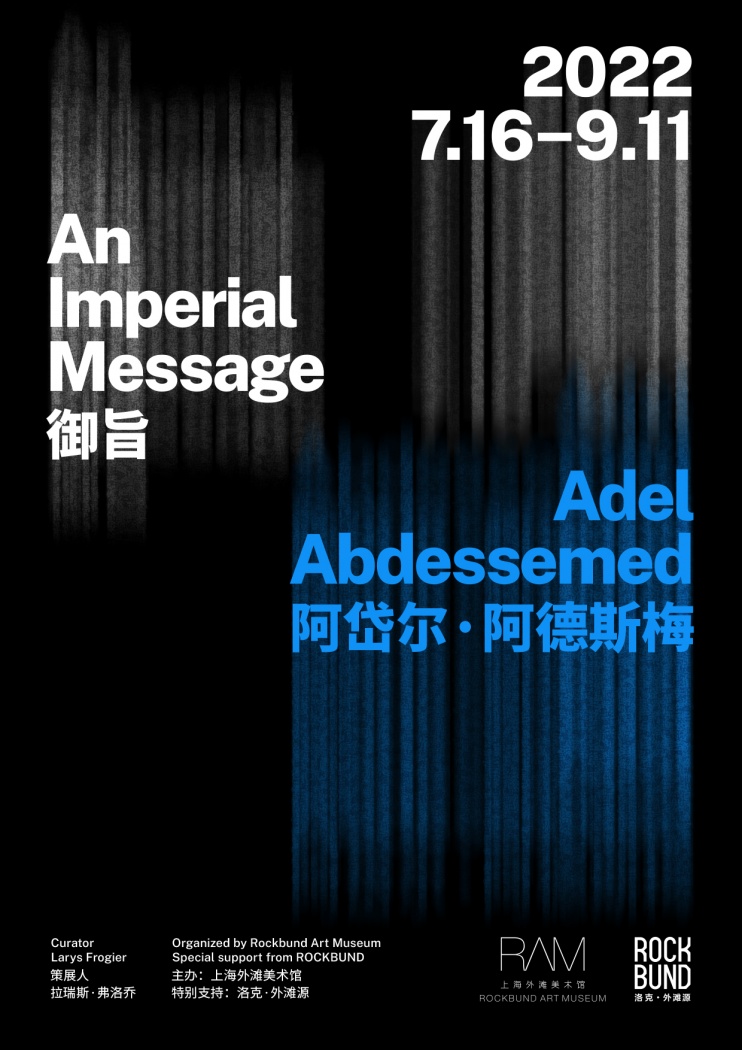
Dates: Jul 16, 2022 - Sep 11, 2022
Venue: Rockbund Art Museum
Courtesy of Rockbund Art Museum.




























